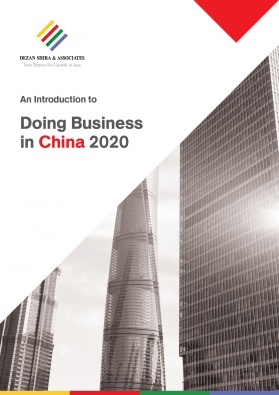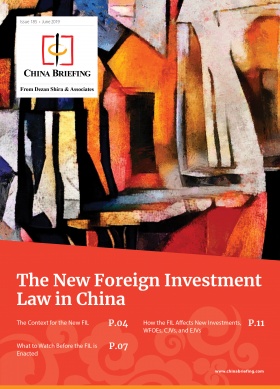Prospects for a 2020 US-China Bilateral Investment Treaty
Op/Ed by Chris Devonshire-Ellis
The recent US-China trade war, and the apparent defrosting of trade relations between Washington and Beijing have raised the prospect of an additional component part being added to the US-China trade basket – a US-China Bilateral Investment Treaty (BIT).
Almost incredibly, the US and China, despite being hugely significant trade partners, do not have such a deal in place. This is a significant omission, as a BIT lays down the basic conditions for bilateral trade, typically including clauses that guarantee investors protection in each other’s markets. Not having such clauses in place is surprising given that the US has often had problems with IP infringement in China. Yet, successive US administrations have ignored drawing up a BIT as an investment protocol, preferring instead to dictate terms of their own, or under WTO rulings, or trying to impose unsatisfactory conditions to them.
This neglect also extends to countries, such as India, whose BIT with the US was allowed to lapse. Curiously, the major sticking points in updating these treaties are often the very arbitration process that the US decries in other markets. Yet, it is reluctant to accept the arbitration process as institutionalized in a BIT – which could potentially negatively impact US corporations. An example is the US government official who suggested that the reason the US-India BIT renewal talks broke down was that under a proposed BIT provision, it is mandatory that a foreign firm, involved in a litigation, will have to first resort to local laws and fight the dispute in local courts for five years before approaching international arbitration. The official US position was that “The US is not ready to fight a case that requires international expertise in local Indian courts.” In other words, the US was not prepared to cede sovereignty in disputes with India.
India meanwhile remembers the Bhopal scandal in which a US-built and owned Union Carbide chemical factory exploded and poisoned thousands of Indians, while the American owners tried to evade responsibility. As a result of the failed US-India BIT, India ceased negotiations with Westinghouse – who shortly afterwards declared bankruptcy – to build nuclear reactors in India. In other words, the US government does not wish to take any responsibility for its companies’ operations in India. It is a bit of a mess, at least as regards the Indian position. So, what would make a US-China BIT any more palatable to Washington?
In fact, the US has been updating its BIT model, a process that has taken over three years, but resulted in only cursory amendments to its model BIT. Mainly this has amounted to tweaking the language on labor and environmental rules. These sections essentially call on a treaty partner – such as China – to maintain their own rules in these areas when courting investors; they do not compel a signatory to adopt certain rules beyond the International Labor Organization Declaration on Fundamental Principles and Rights at Work and its Follow-Up. However, the new US model BIT also contains provisions that go beyond the model prepared by the Organization for Economic Cooperation and Development (OECD), which is the template for many countries. For instance, the US model BIT includes provisions related to foreign equity restrictions as well as labor and environmental issues – areas in which the US is keen to bring China into closer cooperation and comply with global standards.
That pesky arbitration issue will still be in the mix; however, China is more amenable to allowing arbitration in other jurisdictions these days. Thus far, it has been fairly pragmatic on the issue and is a contracting state to the New York Convention on the Recognition and Enforcement of Foreign Arbitral Awards (the 1958 New York Convention). Chinese lawyers and law firms have also developed significantly over the past decade and several now have offices in the US and other countries. It is not unfeasible that China will permit arbitration based in the US. I suspect Beijing is potentially looking forward to some of its SOE’s and China stars being taken to court in the US – and seeing Chinese legal arguments prevail.
This means that from the political angle, there is probably enough to satisfy Washington over being seen, via a BIT with China, to be imposing labor welfare and environmental conditions, while China will probably accept some US-based arbitration and commitments to IP. If so, then much of the remaining text will be purely trade related.
The US trade lobby has also been much bruised during the trade war. Giving US corporations better protection and access to the China market via a US-China BIT would do Trump’s voter base a power of good. With the politics and voter base seemingly aligned, a US-China bilateral investment treaty may arrive on the US-China trade horizon sooner than expected.
China Briefing is written and produced by Dezan Shira & Associates. The practice assists foreign investors into China and has done since 1992 through offices in Beijing, Tianjin, Dalian, Qingdao, Shanghai, Hangzhou, Ningbo, Suzhou, Guangzhou, Dongguan, Zhongshan, Shenzhen, and Hong Kong. Please contact the firm for assistance in China at china@dezshira.com.
We also maintain offices assisting foreign investors in Vietnam, Indonesia, Singapore, The Philippines, Malaysia, and Thailand in addition to our practices in India and Russia and our trade research facilities along the Belt & Road Initiative.
- Previous Article Year in Review 2019: Turning Point for Investors in China?
- Next Article China Cuts Import Tariffs on Select Goods in 2020, Rates Lower than MFN







